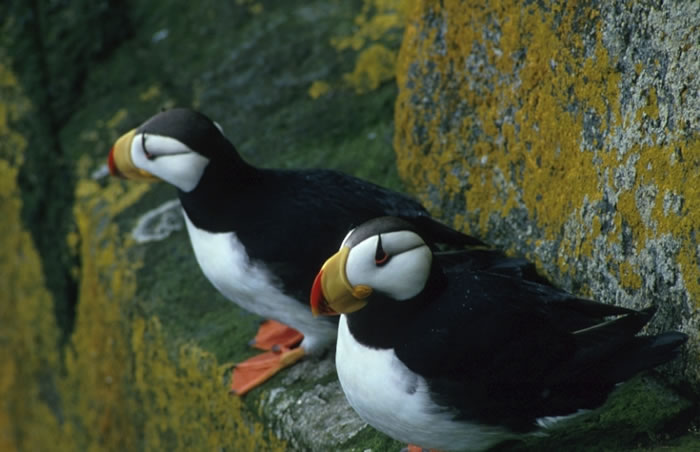NOAA TEACHER AT SEA
CATHRINE PRENOT FOX
ONBOARD NOAA SHIP OSCAR DYSON
JULY 24 – AUGUST 14, 2011
CATHRINE PRENOT FOX
ONBOARD NOAA SHIP OSCAR DYSON
JULY 24 – AUGUST 14, 2011
Mission: Walleye Pollock Survey
Location: Kodiak, Alaska
Date: July 27, 2011
Weather Data from the Bridge
True Wind Speed: na
Air Temperature: 14° C dry/12° C wet
Air Pressure: na
Overcast
Latitude: 57.44° N, Longitude: 152.31° W
Ship heading: n/a
(Limited data, as ship is in port)
Scientific Log:
I've received an in-depth tour of the ship and labs, and I am starting to piece together how the "Acoustic Trawl Survey" works. Basically, NOAA is responsible for monitoring the populations of walleye pollock and accomplishes this task in several ways. The acoustic trawl survey is one part of how this is done. |
| Net Reels |
A trawl is a large net towed behind the ship to catch fish and other organisms. The individuals (of all species) in the catch are identified and counted. Cameras (three) are mounted inside the back of the trawl (codend) to collect images as they pass through the trawl. From this larger catch, a sample of the walleye pollock (about 300 individuals) are dissected to determine sex, diet, measured (length and weight) for size and aged by looking at (yes) their ear bones or otoliths. I'll cover all of this in depth once I have been able to do it and see it in action, but that is the gist.
Personal Log:
 I think first impressions are important. Alaska? Alaska is impossibly big and impossibly green. Too big, perhaps to describe with common adjectives. It took me about two days of travel from the 4-Corners to make my way up here: a Beechcraft 1900 from Cortez to Denver, then flights from Denver to Seattle and Seattle to Anchorage. I spent the night in Anchorage and wandered the city at midnight... ...not that you can tell that it was so late from the pictures.
I think first impressions are important. Alaska? Alaska is impossibly big and impossibly green. Too big, perhaps to describe with common adjectives. It took me about two days of travel from the 4-Corners to make my way up here: a Beechcraft 1900 from Cortez to Denver, then flights from Denver to Seattle and Seattle to Anchorage. I spent the night in Anchorage and wandered the city at midnight... ...not that you can tell that it was so late from the pictures.  |
| Adventures in a Blue World. Issue 6. Cathrine Prenot Fox, 2011. |
As for how 'impossibly green' Alaska is, I was thinking about the reasons Georgia O'Keeffe gave for moving from New York City to New Mexico in 1949. She said (and I paraphrase) that she wanted to use more vibrant colors in her palette of paints than just green. Ms. O'Keeffe would have it rough here in Alaska: greens, greys and blues abound. Adventures in a Blue World Issue 6 may not convince you of the colors of Alaska, but I hope it gives you a grasp of its size.
 |
| Kodiak, Alaska dock |
 |
| Coast Guard dock, Oscar Dyson |
I've already settled in to the ship and my stateroom. My stateroom is small but comfortable, and I share it with a woman who is part of the scientific NOAA team. Interestingly, she worked for the same professor at the Rocky Mountain Biological Laboratory in Gothic, Colorado as an undergraduate that I did. Very Small World.
We are docked in Kodiak for a few more days than anticipated: we are awaiting the arrival of another deck-hand, and there are a few repairs that need to be made to the ship. Once we get started, I will be working the 4am-4pm shift, and taking part in whatever science is taking place. In the meantime, I get to 'nose around' Kodiak, go for hikes and runs, check out museums (see below), and eat as many salmonberries as I can stuff into my mouth.
Until our next adventure,
Cat









